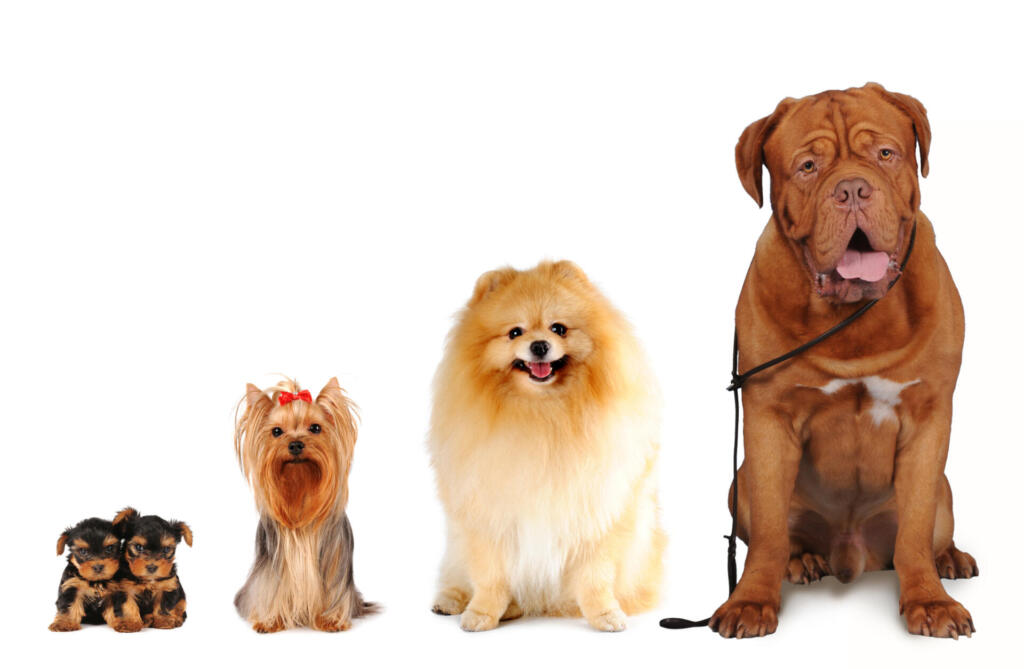Thinking of getting a new pup? Choosing a dog breed is a delicate balance between what you want and what your lifestyle allows, and you want to make sure to get it right. While almost any human will love almost any dog, when there’s a mismatch between Fido’s needs and your way of life, trouble can arise.
Instead, you must take the time to consider the right breed for you ahead of time – and we’re here to help you do it. This post will cover considerations such as size, energy level, temperament, and exercise needs, helping you to make an informed decision, so you can take joy in your furry friend for life!
Article contents
Understanding your lifestyle and needs
First up when choosing a dog breed: understand your lifestyle and needs. Ask questions such as:
- How often am I home? Some breeds are better adapted to being left all day, such as retrievers and beagles. Others, like pit bulls and Australian shepherds, can cause wreckage or be miserable while you’re gone.
- How much do I like to exercise? In general, larger dogs need more exercise, while smaller dogs can get enough by chasing a ball around at home. Do not assume that you will be more motivated to exercise by getting a dog; often this just means the dog gets shorted while you maintain your current levels.
- Do I have other considerations? If you have children or elderly folks in the house, you should seek out gentler breeds, such as labs, spaniels, Newfoundlands, beagles, and pugs. Often mixed breeds and mutts who contain these genes will also exhibit such traits, but make sure before you buy.
Let’s take a look now at some more specific factors in choosing a dog breed.

Size and space requirements
Your next step in choosing a dog breed is to honestly appraise your living situation. Great Danes are probably not suitable for studio apartments, for instance.
Consider whether you have room for the dog’s accessories, such as a bed, crate, food and water bowls, bags of kibble, treats, combs and brushes, and so forth. If your living space is small or without storage, you might find owning a dog burdensome.
It’s also good to have an open space where dogs can be playful, such as a living room or a hall.
Temperament and energy level
Happy owner-dog couples have similar temperaments and levels of energy. If you love hiking, running, walking, and generally moving your body, you’ll want a high-energy dog breed. Think Weimaraners, huskies, or poodles and poodle mixes.
If laying on the couch is more your thing, choose more sedate breeds that love to snuggle, such as bulldogs, pugs, and shih tzus.
Again, match your dog to your current energy level, and don’t assume your dog will change it for you. If you want to get more exercise, try walking on your own for several months to see if it fits into your lifestyle. If not, go for a couch potato dog and call it good!
Activity needs
In addition to exercise, you should weigh activity needs when choosing a dog breed. Some dogs are very smart and exercise is not enough to keep them calm and happy.
Collies, shepherds, retrievers, Dobermans, poodles, Rottweilers, and poodles all tend to be pretty brainy and want lots of interaction and stimulation. That means you’ll need to work harder on training to keep them obedient, because it allows them to use their brain. Without it, such breeds are likelier to get into trouble.
Smarter, larger, and more active dogs will also want somewhere to really break free and run. If you have a large open space at your house, buy a Chuckit! and throw the ball for them in addition to your walks. (Word to the wise: always warm your dog up first to avoid sprains, pulls, and injuries.)
Smaller and more simple-minded breeds will still want to interact with you regularly. Plan on making time to tussle, train, and explore the world together, even if these happen in shorter spurts.

Additional considerations when choosing a dog
Here are a few additional things to think through before bringing Rover home.
Adopting a dog
Instead of choosing a specific dog breed, you might want to bring home an animal in need. That’s wonderful, but know that these tend to be more work, less initially friendly, and a greater challenge overall.
That’s not to say rescues aren’t wonderful companions and great additions to families and neighborhoods. They absolutely can be! Just know ahead of time that the learning curve will likely be steeper.
Getting more than one dog
Beyond choosing a dog breed, there’s the question of how many dogs you’ll get. Most people get one dog at a time, and that’s a good way to ensure you have enough time for all of them. However, some people choose to get a matched set, especially with siblings.
If you’re thinking of getting two at one, it’s a good idea to take an even closer look at your lifestyle and bandwidth. That is two dogs to walk and train, two crates to put in your home, and two animals to squeeze onto your couch. Also, you’ll likely need help.
Available help
Before choosing a dog breed, ask yourself how much help you’ll get realistically. Even if you’re part of a family of four, if no one else will reliably walk the animal, then its exercise and stimulation are still all on you.
Getting a dog is a big decision, so if it affects a household as opposed to just you, have a family or roommate meeting before taking the plunge. This will clue you into considerations you may be overlooking.
Good luck choosing your dog breed!
Now that you have a basic checklist to work from when choosing a dog breed, you have a much better chance of identifying the type of dog that works for you. Choose well, and you and your pup can expect a long and happy life together!
